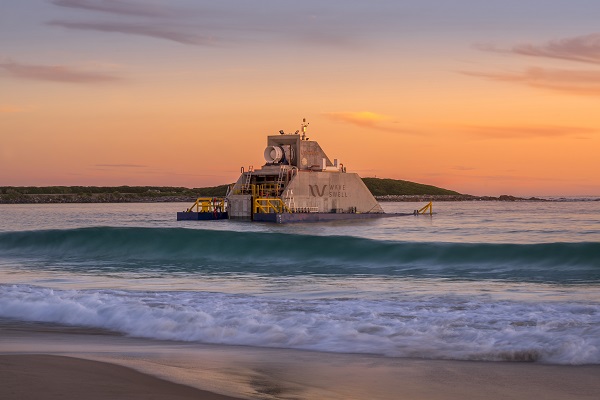Wave Swell Energy: Creating power from waves
Wave Swell Energy has developed a technology that converts wave energy into electrical energy with its innovative UniWave solution. Sean Carroll finds out more.
Melbourne technology company Wave Swell Energy (WSE) must’ve been attending the Rip Curl Pro surfing event at Bells Beach, overheard a surfer talking about how much ‘energy’ was out there with the waves and taken it literally.
ADVERTISEMENT
Because that is exactly what it’s trying to do with its UniWave technology, producing sustainable and clean electricity by harnessing the power of the ocean.
The UniWave (pictured) looks like most boats you’d see on the ocean but, as WSE chief technology officer Scott Hunter explains, it’s quite different underneath. The technology is based on the well-established concept of the oscillating water column (OWC).
“It’s like an artificial blowhole which consists of a large hollow chamber, open to the waves under the water. This results in the water rising and falling inside the chamber as the waves pass by. The chamber extends above the water line, with air being moved back and forward by the water. This air flow drives a turbine that generates electricity,” Scott says.
The result is an incredibly reliable source of energy that, if the trial by WSE is successful, will create a sustainable and reliable source of power for as long as waves keep crashing. As a base load power, it can be produced constantly and meets a prescribed minimum which makes it ideal as a backup source.
Scott explains that if the project is expanded out to a larger scale, it could make for a viable primary power source for some smaller islands and it could definitely be an alternative to diesel or non-renewable energy.
“Overall, the technology will generally complement other renewables, as well as fossil fuel generation during the world’s transition to renewables. It also doubles as a form of coastal protection which will constitute an important use in many locations.”
The project is currently underway and, as of writing this, in its commissioning stage but there are several outcomes the WSE team is hoping to achieve. It’s also taking place just off Grassy, on the east coast of the island and is looking for ways to maximise the power generated and reduce the amount of wastage in the process.
The initial goal of the project is to displace diesel power generation in remote locations through the UniWave solution with the eventual goal of becoming cost competitive with other forms of renewables at grid scale.
Scott says that following the two trial sites, WSE will decide what to do next with the new results: “The data from the King Island project will act as inputs to Project Bluefire, a comprehensive technology enhancement program that WSE will embark upon after the King Island project.”
According to the WSE project expectations on their website, Tasmania was chosen as the desired site for two reasons: “The wave climate is amongst the best in the world and, Hydro Tasmania, being a world leader in the integration of renewables into island grids, provides the project with a virtually unparalleled level of relevant expertise.”
The process also incorporates short-term electrical storage and using state-of-the-art ultra-capacitors, is looking at more efficient ways to deliver electrical energy to the grid.
Another added benefit of the solution is the coastal protection from erosion it provides. When WSE units are deployed in close proximity, they can act as a break wall or sea wall. Instead of just sitting there as a pile of rocks protecting the coast, it can be an added revenue stream (pun intended).
Tethys, the US Department of Energy website, has published a reference to a study that found that wave farms are able to decrease beach erosion even under rising sea-level situations: “That makes wave farms attractive management strategies, as they contribute to the decarbonisation of the energy mix and are more efficient in terms of coastal protection under sea-level rise than traditional hard-engineering structures,” it writes.
Building on all those benefits, who knows what’s next? What’s especially exciting about the trial is that there’s plenty of oceans on our planet, meaning plenty of opportunities to harness the wave energy and potentially become the next innovation in sustainable and clean energy.
Catch the waves, bro.
-
ADVERTISEMENT
-
ADVERTISEMENT


